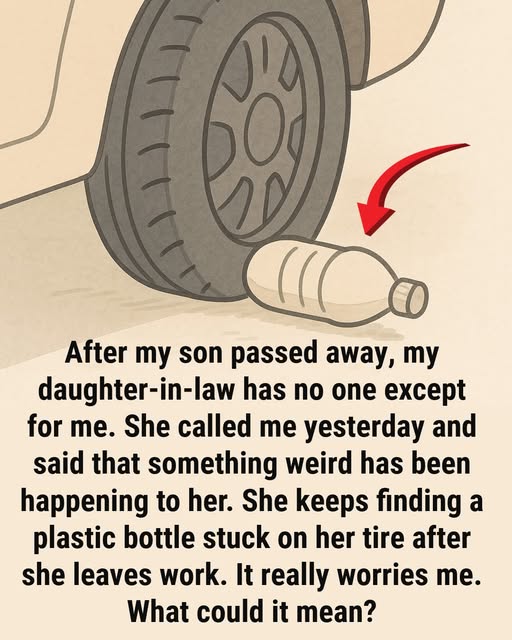On its own, a bottle is harmless. Anyone could dismiss it as trash that drifted there by accident. But the sound it makes—unexpected, sharp, and close—does exactly what it’s intended to do. It pulls the driver out of the vehicle.
It’s a tactic that depends on instinct. When a car makes a noise it shouldn’t, your brain goes straight into troubleshooting mode. Is the tire flat? Did I hit something? Is it safe to drive? The natural reaction is to stop, step out, and investigate. And in that brief moment, the car sits running, the door open, the driver separated from their vehicle just far enough to be distracted. Whether the intention is theft, intrusion, or simply identifying a driver who’s not paying attention, the opportunity is created in the seconds between hearing the noise and figuring out what caused it.
Most people will never encounter a bottle-by-the-wheel situation in their lifetime. These incidents aren’t widespread. They’re not trending crimes, not sweeping through cities, not something to panic over. But the lesson they carry is worth paying attention to: distractions work because people are busy, tired, or unaware of what’s happening around them.
And awareness is a skill that can be practiced.
The truth is, most drivers go through the same motions every day without thinking. Walk to the car. Unlock it. Get in. Toss the bag in the passenger seat. Start the engine. Move on. They don’t glance at the tires. They don’t check the ground. They don’t take inventory of the space around them. It’s a quick routine meant to get them from point A to point B without delay.
But paying attention doesn’t have to be complicated. It doesn’t require suspicion or paranoia—just a little more presence.
A few seconds can make a difference. Before getting into the car, take a quick look at the tires and the ground beside them. Notice anything unusual: bottles, objects, folded papers, anything that wasn’t there before. If something looks out of place, there’s no need to kick it aside or reach down to inspect it. Instead, step back, move to a safe location, and contact local authorities. Even if the object turns out to be nothing more than litter, the moment of caution is worth the peace of mind.
Inside the car, habits matter just as much. Lock the doors as soon as you’re seated. If you need to get out for any reason—whether it’s from a noise outside the car or something you accidentally dropped—turn off the engine and take the keys with you. Keep personal items out of sight. These steps aren’t dramatic; they’re practical, protective routines meant to eliminate easy opportunities for problems.
The bottle tactic, as simple as it is, reminds people of something bigger: distraction is one of the easiest ways to catch someone off-guard. It doesn’t require force. It doesn’t require confrontation. All it takes is a sound that sends someone looking the wrong way. Understanding how these distractions work helps drivers stay ahead of them.
Communities that have shared information about this trick aren’t trying to spark fear. They’re trying to build awareness—practical awareness that comes from experience, from neighbors looking out for one another, from people passing on something they heard so others don’t get caught by surprise. These small exchanges of information create a network of prepared individuals who know what to do when something doesn’t feel right.
Talking about these incidents with friends and family does more than spread caution; it opens the door to conversations about everyday safety. Everyone drives. Everyone parks. Everyone moves through public spaces where awareness matters. A single reminder—check your surroundings, lock your car, take a second to look—can stick with someone and shape a smarter habit.
The reality is that most daily routines are safe and uneventful. Most people will walk to their car a thousand times without ever seeing anything suspicious near their tires. But the point isn’t to expect danger. The point is to respect the small habits that keep you grounded, alert, and aware as you move through the world. Safety isn’t about living in fear; it’s about being present enough to notice when something looks off.
A plastic bottle by a tire is just one example. There are countless little moments like it—details that can go unnoticed until they suddenly matter. Recognizing these small cues isn’t about being paranoid; it’s about being engaged with your surroundings in a way that keeps you confident, not fearful.
In a world that moves fast, awareness is a quiet kind of power. A three-second glance at your tires. A habit of locking your doors immediately. A moment of pause before stepping out of a running car because of an unfamiliar sound. These actions don’t feel dramatic, but they build a mindset that prioritizes your safety without taking anything away from your daily life.
A plastic bottle doesn’t seem like much. But noticing it—really noticing it—can be the difference between being caught off-guard and staying in control. And sometimes, that tiny bit of awareness is all you need to keep moving through the world with confidence.

